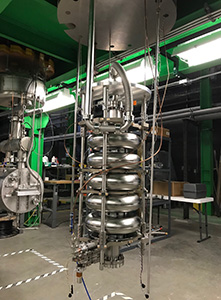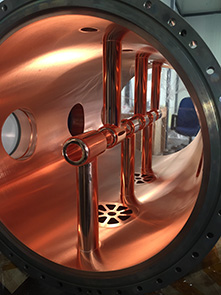
Professor of Physics
Joined the laboratory in 2016
Education and training
- PhD, Institute for Nuclear Research, Moscow, 1982
- Doctor of Science, Moscow Engineering Physical Institute, 1993
Research focus
- Accelerator physics and engineering
Contact information
Research
Particle accelerators are major tools for discovery in nuclear physics, high energy physics and basic energy science. A new national-user facility for nuclear science, FRIB is based on a state-of-the-art 400 kW superconducting linear accelerator. FRIB employs a large number of accelerator physicists and engineers and attracted significant DOE funding for education of graduate students under the Accelerator Science and Engineering Traineeship (ASET) program. The main focus of the Accelerator Physics Department is the detailed understanding of beam physics issues in this new facility to achieve the design beam power and deliver a wide selection of isotopes to the experiments. A significant innovative engineering effort will be necessary to achieve routine operation with 400 kW beam power. At the same time, research and development (R&D) for future FRIB upgrade scenarios is being pursued to enable new high-priority and high impact research opportunities. This task requires strong communication between accelerator physicists, engineers and nuclear physicists to understand the highest priority research. The list of possible short-term and midterm accelerator R&D goals includes the development of a cost-effective option for a high energy upgrade of the FRIB driver linear accelerator (linac) which will be based on newly developed medium-beta superconducting (SC) cavities capable of doubling the energy of FRIB beams over the available space of 80 meters. Other R&D tasks include the development of multitarget driver linac operation with the simultaneous acceleration of light and heavy ions, and the development and implementation of techniques to increase efficiency for the delivery of radioactive ion beam species to user experiments or the post-accelerator. The long-term accelerator R&D will enable the best science in the world at an expanded FRIB which may include storage rings and a radioactive-ion-electron collider.


How students can contribute as part of my research team
The mentioned accelerator R&D topics open vast opportunities to involve PhD students and post-doctoral researchers. In the past 10 years I have guided a group of scientists, engineers, young researchers, students, and technicians who have developed and implemented several innovative accelerator systems such as high performance SC cavities and cryomodules, a CW RFQ with trapezoidal vane tip modulations, an EBIS for the fast and efficient breeding of radioactive ions. We have also designed and demonstrated several new accelerating structures for ion linacs, developed and built bunch length detectors for CW ion beams, as well as profile and emittance measurement devices for rare-isotope beams.
Scientific publications
- Acceleration of uranium beam to record power of 10.4 kW and observation of new isotopes at Facility for Rare Isotope Beams, P. N. Ostroumov et al., Phys. Rev. Accel. Beams 27, 060101 (2024).
- First Simultaneous Acceleration of Multiple Charge States of Heavy Ion Beams in a Large-Scale Superconducting Linear Accelerator, P. N. Ostroumov, K. Fukushima, T. Maruta, A. S. Plastun, J. Wei, T. Zhang, and Q. Zhao, Phys. Rev. Lett. 126, 114801 (2021).
- Efficient continuous wave accelerating structure for ion beams, P.N. Ostroumov, et al., Phys. Rev. Accel. Beams 23, 042002 – Published 8 April 2020.
- Elliptical superconducting RF cavities for FRIB energy upgrade, P.N. Ostroumov, et al., Nuclear Inst. and Methods in Physics Research, A 888 (2018) 53–63.

